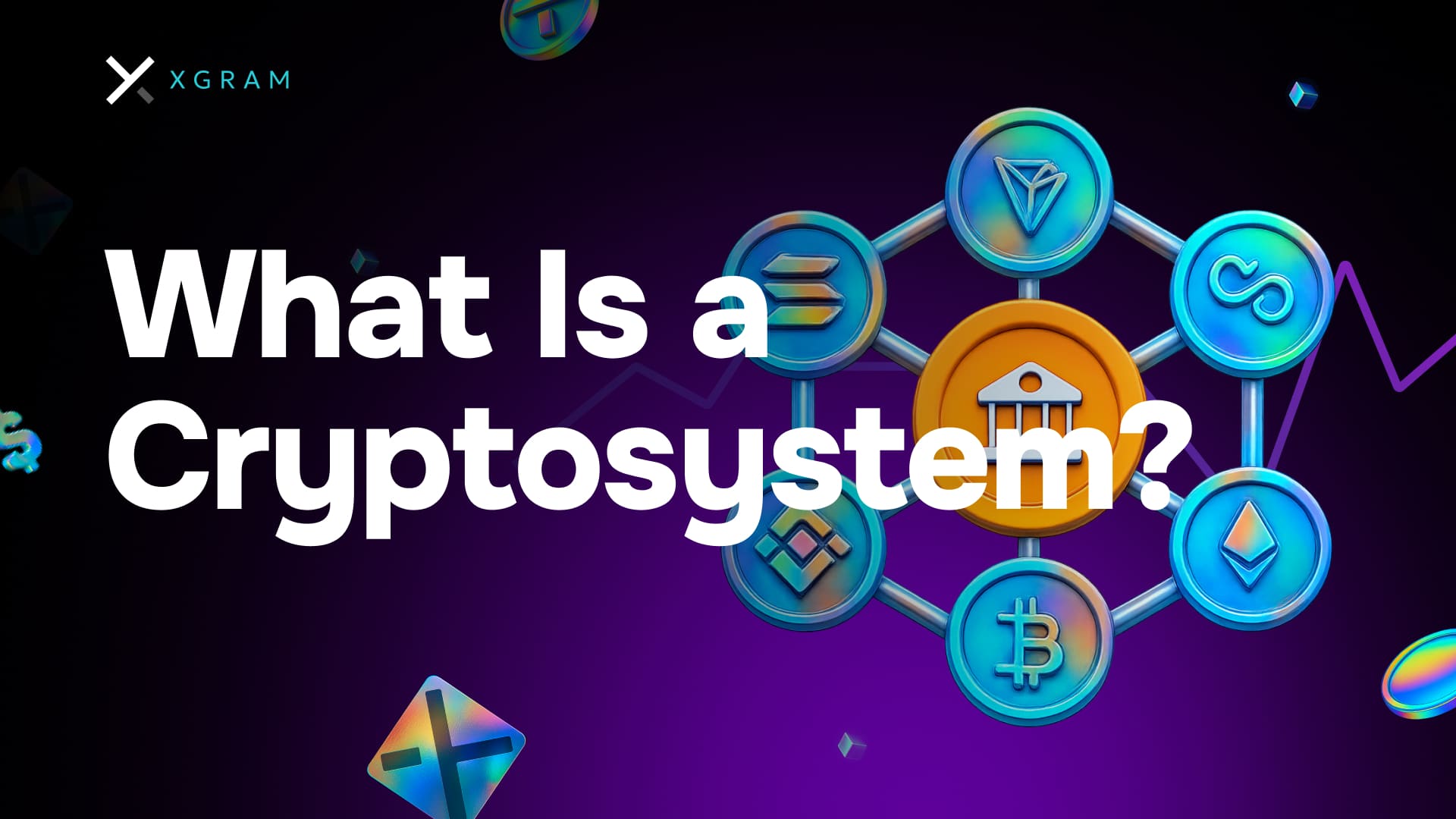TL;DR (Quick overview)
- A cryptosystem is the secure foundation for encrypting and decrypting digital information.
- It uses algorithms, keys, and sometimes specialized hardware to protect data and transactions.
- Cryptosystems power your favorite cryptocurrencies, ensuring your assets remain safe and tamper-proof.
- Understanding them helps you navigate exchanges, wallets, and cross-chain swaps confidently.
Understand the basics of cryptography
Cryptography is the science of hiding and revealing information through mathematical techniques. At its core, cryptography lets you turn readable data into a coded format, so only authorized recipients can read it. You might have used encrypted messaging apps without even realizing you were benefiting from basic cryptographic principles. This same logic applies to what you do in the crypto domain: obscure sensitive data, protect your keys, and keep transactions traceable yet secure.

Cryptographers—professionals devoted to creating and testing secure protocols—study how to enhance data confidentiality, authentication, and integrity. Their efforts give you the peace of mind to share private information or move digital money without exposing it to unwanted eyes. For example, encryption algorithms like AES (Advanced Encryption Standard) transform your wallet password into text that is unreadable by anyone but you. Decryption algorithms, on the other hand, decode that scrambled text back into a usable password when you legitimately request it.
For cryptocurrencies, cryptography is non-negotiable. Without cryptographic proofs, it would be impossible to verify that a transaction is valid and that the same digital coin was not spent twice. Whether you realize it or not, you rely on this sophisticated math every time you buy or sell crypto on an exchange, store tokens in your wallet, or sign a transaction digitally.
Components of a cryptosystem
When you ask “What is a cryptosystem?” you are essentially looking at a combination of tools and processes that support secure communication. The main components include:
Encryption algorithms
These rules govern how to convert readable data (plaintext) into unreadable data (ciphertext). Well-known examples include RSA and Elliptic Curve Cryptography (ECC). Each algorithm targets strength and efficiency, protecting your data in a specific way.Decryption algorithms
Equally important are the rules that convert ciphertext back into plaintext when you hold the right key. So, if you encrypt a private message using someone’s public key, only that person’s unique private key can decipher it.Keys
No cryptosystem can function without keys. These are often random strings of bits that lock (encrypt) and unlock (decrypt) digital data. A public key is shareable, much like a bank account number you give to others so they can send you funds. A private key, in contrast, is secret and grants you authority to manage or spend the crypto you own. Losing or exposing your private key can result in lost access to your assets.Key generation and management
Keys need to be created, distributed, replaced, and stored in a safe environment. Key management solutions ensure that your confidential information is only accessible to the right people under the right conditions. Many crypto wallets integrate robust key management mechanisms, protecting your seed phrases and private keys through hardware or well-tested software methods.Protocols
These are the rules that decide how data is shared. Crypto protocols dictate how encryption, decryption, and key exchanges take place between parties. In cryptocurrency projects, protocols also govern how transactions are validated, ensuring that each new block in a blockchain is trusted and accurate.
By combining these five core components, cryptosystems form the backbone of any secure digital environment. They not only protect your transactions but also make concepts like peer-to-peer transfers possible without needing an all-powerful central authority.
Why cryptosystems matter for your crypto journey
When you step into the world of cryptocurrency, you are entering an environment that thrives on transparency but also on tight security. Transactions are often visible on a public ledger, yet the identity of the person behind them remains protected by cryptographic methods.
Security for your investments
If cryptosystems did not exist, attackers could easily intercept and manipulate transactions. Funds could vanish, and trust in any crypto platform would collapse. Cryptosystems create the line of defense that keeps unscrupulous actors at bay.Ensuring authenticity of transactions
Every transaction you sign with your private key proves that you authorized that action. The cryptosystem ensures that no one else can forge your digital signature. Once validated by the network, your transaction permanently enters the blockchain, giving you the assurance that your claim to those coins can never be reversed without your permission.Building trust in decentralized systems
Much of the crypto universe is decentralized, meaning no single authority decides what is correct or valid. Instead, a consensus mechanism and cryptography align thousands of nodes to agree on the state of the ledger. This design is only possible because cryptosystems keep the system honest. Each participant has an equal opportunity to validate transactions, and tampering with the records becomes prohibitively difficult.Protecting privacy
While your public wallet address might be visible, cryptography helps keep your identity under wraps. You decide how much personal information to connect to your wallet. For those who require anonymity or at least partial anonymity, cryptography is your ally.
Understanding this layer of security gives you the confidence to navigate exchanges, yield farming opportunities, or even cross-chain protocols without undue fear of losing your funds to hackers.
How cryptosystems protect you
You might have come across stories of malicious attacks and stolen crypto assets. While these do happen, cryptosystems remain one of the strongest defensive barriers you have. Here is how:
Hashing for data integrity
Hashing algorithms take data and produce a fixed-size output known as a hash. If anything about the data changes—even a single character in a transaction—the hash changes drastically. This property helps detect tampering. In the world of cryptocurrencies, hashing is used in mining and block creation, so the entire network can quickly spot unauthorized adjustments.Encryption for privacy
Whether you are sending private keys, exchanging sensitive details with a trading platform, or simply holding data on your computer, encryption ensures that nobody except you or your intended recipient can read it. Even if a hacker intercepts your ciphertext, it should be meaningless without the decryption key.Digital signatures for authenticity
In the crypto space, you sign transactions with your private key. The network then confirms your signature using your public key. Because each key pair is mathematically linked, the system can verify that you are indeed the person behind the transaction, all without revealing your private key.Sophisticated algorithms
Modern cryptography has advanced algorithms specifically designed to be resilient against brute-force or quantum-based attacks. As computing power grows, researchers keep upgrading the cryptosystems to maintain an advantage over potential threats.
At the same time, any cryptosystem is only as strong as your personal security habits. You are a co-custodian of your crypto. This means storing your private keys on secure hardware or using reliable wallet services, not clicking on random links, and ensuring your devices remain clean from malware. Good user practices, combined with robust cryptographic protections, give you a powerful shield.
Common uses of cryptosystems in the blockchain realm
Blockchain technology revolutionizes trust, but cryptosystems make that revolution possible. Consider how often you use cryptography:
Securing wallet transactions
Each time you send or receive cryptocurrency, you rely on a cryptosystem to sign off that transaction correctly. If your private key is safe, no one but you can spend your funds.Protecting smart contracts
Smart contracts execute automatically once certain conditions are met, but they still need to confirm that each involved party has legitimately signed off on the contract. Cryptographic signatures confirm authenticity on both sides.Running node validation
If you run a full node on a blockchain network, that node verifies incoming blocks through hashing, consensus protocols, and cryptographic checks. These procedures filter out fraudulent or incorrect blocks before they get appended to the chain.Layer-2 scaling solutions
Many second-layer protocols, like state channels or sidechains, rely on cryptography to keep track of interim transactions off the main chain. When participants settle on the main chain, cryptographic proofs ensure the final transaction record is accurate.Zero-knowledge proofs
Some advanced projects use zero-knowledge proofs so you can prove something is valid without revealing the underlying information. For instance, you could prove your wallet has enough funds to cover a payment without disclosing your total balance, all via mathematical verification.
In each scenario, cryptosystems quietly operate in the background. They support everything from the simplest peer-to-peer payment to the most complex decentralized finance (DeFi) protocol. Knowing this can inspire you to be more proactive about verifying what happens behind the scenes rather than blindly trusting any platform.
Exploring real-world crypto examples
While the theoretical explanation can be heavy, real-world examples bring clarity to how cryptosystems bolster trust:
Bitcoin
This pioneering cryptocurrency uses a cryptographic proof-of-work system. Miners compete to find a valid hash that satisfies the network’s difficulty. Cryptographic functions validate that the hashed block header meets specific criteria. This prevents malicious parties from altering blocks without redoing all the computational work.Ethereum
Ethereum begun with a proof-of-work mechanism similar to Bitcoin but has transitioned to a proof-of-stake approach. It also uses robust cryptographic primitives to sign transactions, execute smart contracts, and maintain the Ethereum Virtual Machine’s state securely. Attacking the network would require holding a massive stake, making it economically unwise to attempt fraudulent actions.Privacy Coins
Coins like Monero or Zcash rely heavily on specialized cryptographic techniques, such as ring signatures, stealth addresses, or zk-SNARKs, to keep the transaction details obscured. These advanced cryptosystems protect sender and receiver identities while retaining the ability to verify valid transactions internally.Cross-chain solutions
Projects enabling tokens from different blockchains to interact safely use cryptographic methods to verify that assets locked on one chain are genuinely mirrored on another. This can involve hashed time-locked contracts (HTLCs) or advanced bridging protocols that ensure no double-spending occurs across different networks.
From these examples, you see that cryptography is woven into nearly every cryptocurrency on the market. If you use any of these coins, you are already trusting cryptosystems to safeguard your digital wealth.
Where xgram fits in your crypto activities
You might be surprised at how many platforms now offer cross-chain services, letting you swap assets from one chain to another without hassle. One interesting place to do this is xgram. Here’s why it can matter for you:
- xgram is designed as an exchange for cross-chain swaps as well as conventional trades, helping you avoid complicated bridges.
- You can save on fees, because xgram’s protocols optimize transaction routes, making each trade more efficient.
- You do not need to connect a wallet before making the exchange, which appeals to beginners wary of messing up wallet integrations.
- The platform’s backend leverages cryptographic security to ensure that when you swap tokens, they actually get transferred from the source chain to the target chain without duplication.
- xgram’s user-friendly interface simplifies the entire process, so as a new crypto fan, you can focus on learning rather than juggling multiple tools that might expose you to unintentional errors.
By using a platform like xgram, you are essentially trusting a cryptographic system to handle your transactions. The platform’s main advantage is showing how cryptography can reduce user complexity while still giving you strong security benefits.
Tips on staying secure
Nobody wants to experience the heartbreak of losing digital assets. While cryptosystems offer robust protection, there are still practical steps you can take to enhance your security.
Set up multi-factor authentication (MFA)
Wherever possible, add extra layers of security, like SMS-based codes or authenticator apps. This measure helps ensure a hacker cannot break into your exchange or email accounts by simply guessing your password.Store your private keys safely
If you keep your crypto on a personal wallet, consider using a hardware wallet that stores private keys offline. This solution keeps your keys away from malicious software that can target browser-based wallets.Regularly update your software
Whether it is your operating system, wallet software, or antivirus suite, keep them all current. Updates often come with security patches that close discovered vulnerabilities, making it harder for hackers to exploit your system.Use reputable platforms
Before trusting any exchange or decentralized app (dApp), do some due diligence. Look into reviews, track records, and community feedback. Avoid suspicious offers that promise unrealistic returns, as those are prime candidates for scams.Beware of phishing attempts
Always verify URLs, email senders, and any “urgent” messages claiming you have a problem with your wallet. Scammers often replicate well-known exchange homepages to trick you into revealing your credentials.
Remember, cryptosystems are powerful, but they cannot stop all user-based errors. The more proactive you become in your security habits, the more you will benefit from cryptographic protections.
Conclusion
Cryptosystems might sound complicated on day one, but think of them as the gatekeepers of your digital assets. Everything from encryption algorithms that shield your private messages to hashing functions that keep each transaction consistent plays a part in shaping a reliable crypto environment for you. As the crypto market continues to evolve, so will cryptosystems, ensuring your data and transactions stay one step ahead of threats.
By understanding this foundational layer, you empower yourself to make better decisions regarding exchanges, wallets, and investment projects. Whether you are swapping tokens across multiple blockchains, using xgram to streamline cross-chain trades, or simply storing your coins for long-term growth, cryptosystems silently do the heavy lifting. With a blend of strong cryptography and mindful security habits, you will keep your assets where they belong—in your control.
FAQs
What is a cryptosystem in simple terms?
A cryptosystem is an arrangement of algorithms, keys, and protocols that protects your digital data. It keeps your information private, verifies authenticity, and prevents unauthorized access to sensitive details.How are cryptosystems used in cryptocurrencies?
Cryptosystems are the backbone of any cryptocurrency. They enable secure transactions, verify digital signatures, and maintain the accuracy of the blockchain. Without cryptography, the concept of decentralized digital money would lose its reliability.Why do I need to manage my private keys?
Your private keys control access to your crypto assets. Anyone with your private keys has the authority to transfer or spend your funds. That is why safe key management through hardware wallets or secure software wallets is critical for asset security.What if someone cracks the encryption?
Modern cryptographic algorithms are designed to be extremely difficult to break with current computing power. Researchers constantly update these algorithms to keep them resistant to new attack methods. As long as you follow best practices and no fundamental flaws appear, your data remains secure.Can I switch between different blockchains without worry?
Cross-chain swaps and bridges rely on robust cryptosystems to ensure transaction integrity. Platforms like xgram streamline the process, but it is still essential to do your own research and confirm the security features of each blockchain and bridging tool you use.
By understanding what is happening behind the scenes and combining that knowledge with good security habits, you will have a much smoother path in the ever-expanding realms of cryptocurrency and blockchain technology.




